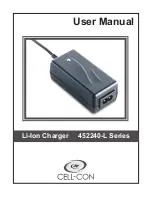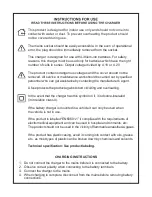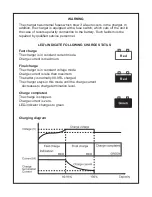
CHARGING INSTRUCTIONS
This product is designed for indoor use only and should not come into
contact with water or dust. To prevent overheating the product should
not be covered during use.
The mains socket should be easily accessible. In the even of operational
error, the plug should be immediately removed from the socket.
This charger is designed for use with Lithium-ion batteries. For safety
reasons, this charger must be used only for batteries which have the right
number of cells in series: Output voltage divided by 4.1V or 4.2V.
The product contains dangerous voltages and the cover should not be
removed. All service or maintenance work should be carried out by qualified
personnel who can get assistance by contacting the manufacturer’s agent.
A fuse protects the product against short circuiting and overloading.
In the event that the charger has this symbol on it, it is double-insulated
(in insulation class II).
If the battery charger is mounted in a vehicle it can only be used when
the vehicle is not in use.
If the product is labelled “EN60601-1” it complies with the requirements of
electromedical equipment and can be used in hospital environments, etc.
The product should not be used in the vicinity of flammable anaesthesia gases.
If the product has plastic casing, avoid it coming into contact with oils, grease
etc., as most types of plastic can be broken down by chemicals and solvents.
Technical specification: See product labeling.
1. Do not connect the charger to the mains before it is connected to the battery.
2. Observe correct polarity when connecting to the battery terminals.
3. Connect the charger to the mains.
4. When charging is complete, disconnect from the mains before removing battery
connections.





















